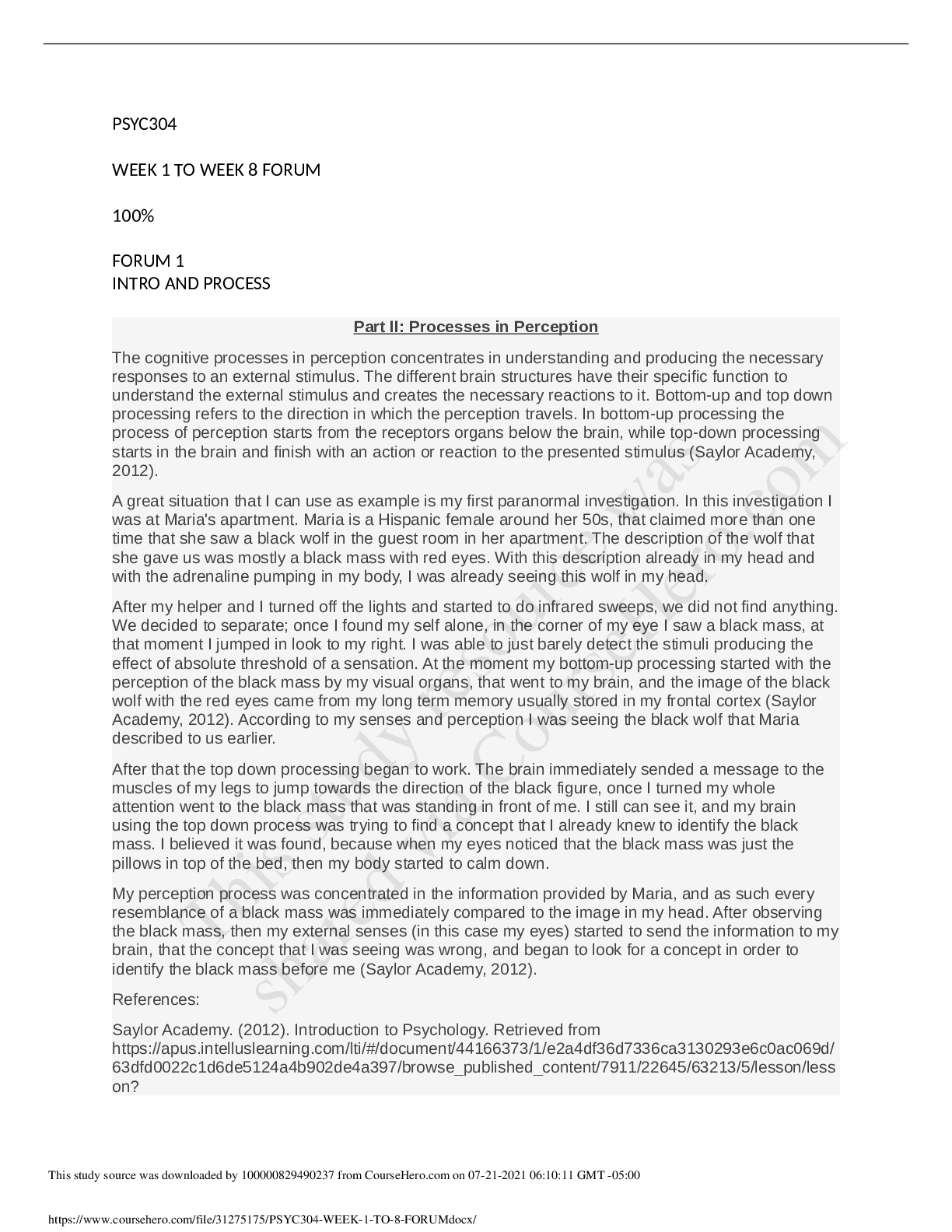week 1 discussion PEDS[FULL AND VERIFIED SOLUTIONS TO PURSUE GRADE A+
Document Content and Description Below
What are the sources of pediatric primary care in the United States? Are these sources sufficient for providing health-care services to the pediatric population? Why or why not? Sources of pedia... tric primary care in the US include physicians’ offices, health care clinics, health departments, hospital visits and outpatient clinics. Visits to physicians’ offices account for more than 80% of all visits to primary care delivery sites. Clinics, health centers, and hospitals can provide primary care, but it has been researched and the data shows these settings tend to serve different populations than those who are seen at the physician’s office. A greater percentage of minority or lower income families are seen at these locations. These also tend to be children who are in worse health and need the most care. Although these clinics play an important role in our health care system as they often focus upon providing care for underserved populations, these are not enough. There are not enough throughout the US to provide enough care to the population. Not to mention all the barriers that come along with the care needed. I think we are doing a good job, but there is a lot of room for improvement on making sure every child is properly cared for in a primary care setting from birth to adolescence and up. This is how we create a healthy population. Are there certain pediatric populations that lack access to health-care services? Why? Children’s Health Fund estimates that, at minimum, 20.3 million children in the United States face barriers to accessing essential health care. This include children who are uninsured, children who are publicly insured that have been seen at the primary care off but have unmet specialty needs such as cardiology or endocrinology and children who have not received any routine care. There is a great disparity. 1 in 5 Latino children, 1 in 5 American Indian children, 1 in 8 Black children, 1 in 9 Asian/Pacific Islander children, and 1 in 13 White children is uninsured. The greatest number is seen in low-income and minorities. The bottom line is that the reason these children lack access circles back money. If they are not insured, they are rarely seen. If they are insured, they are usually at a Medicaid level of insurance and are not able to get all the specialty care that they need. On top of these issues, transportation to and from appointments can also be a barrier for these families to also try and overcome. What are the barriers to children in accessing health-care services in the United States? Why do these barriers exist? After doing my research, it is evident that there are two types of barriers to children accessing healthcare services: Financial and Non-financial. Financial barriers meaning cost. This includes the costs imposed by a coverage plan that prevents children from accessing the care they need. This would be high copays, deductible’s and high cost or unaffordable prescriptions medications. Not to mention provider-based barrier that create a financial burden because certain clinics or specialties won’t accept certain forms of insurance even though it is essential that the child seeks this care. Non-financial barriers are barriers such as informational or geographical. Informational meaning parent’s literacy, language barriers and even confusion on insurance coverage. Geographical barriers include means of transportation. Many low-income families [Show More]
Last updated: 2 years ago
Preview 1 out of 2 pages

Buy this document to get the full access instantly
Instant Download Access after purchase
Buy NowInstant download
We Accept:

Reviews( 0 )
$10.00
Can't find what you want? Try our AI powered Search
Document information
Connected school, study & course
About the document
Uploaded On
Apr 28, 2021
Number of pages
2
Written in
Additional information
This document has been written for:
Uploaded
Apr 28, 2021
Downloads
0
Views
50





.png)
.png)
.png)
.png)
.png)

